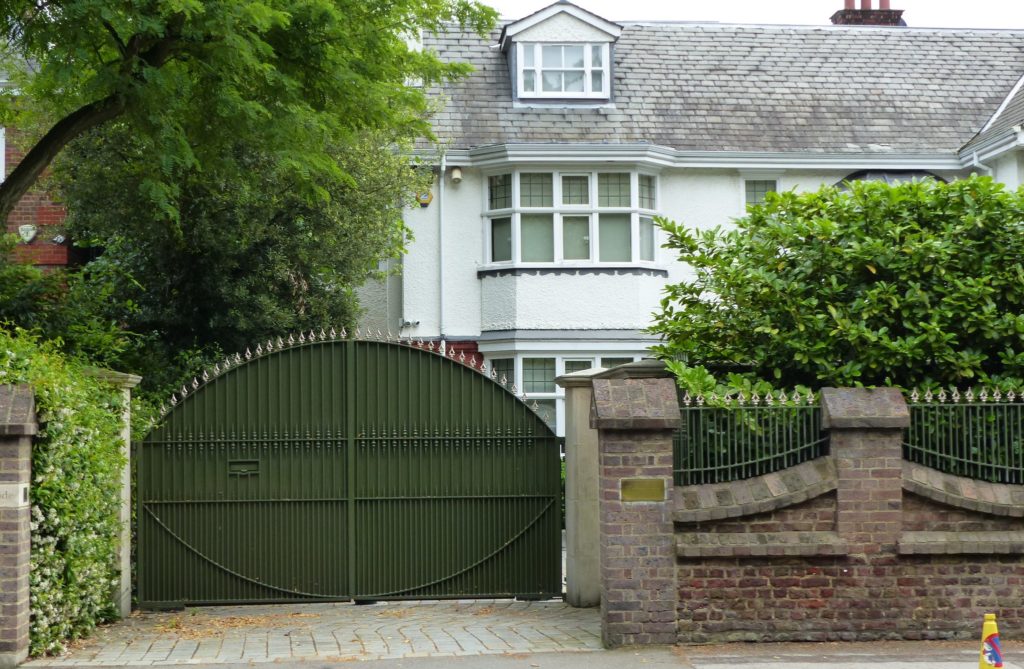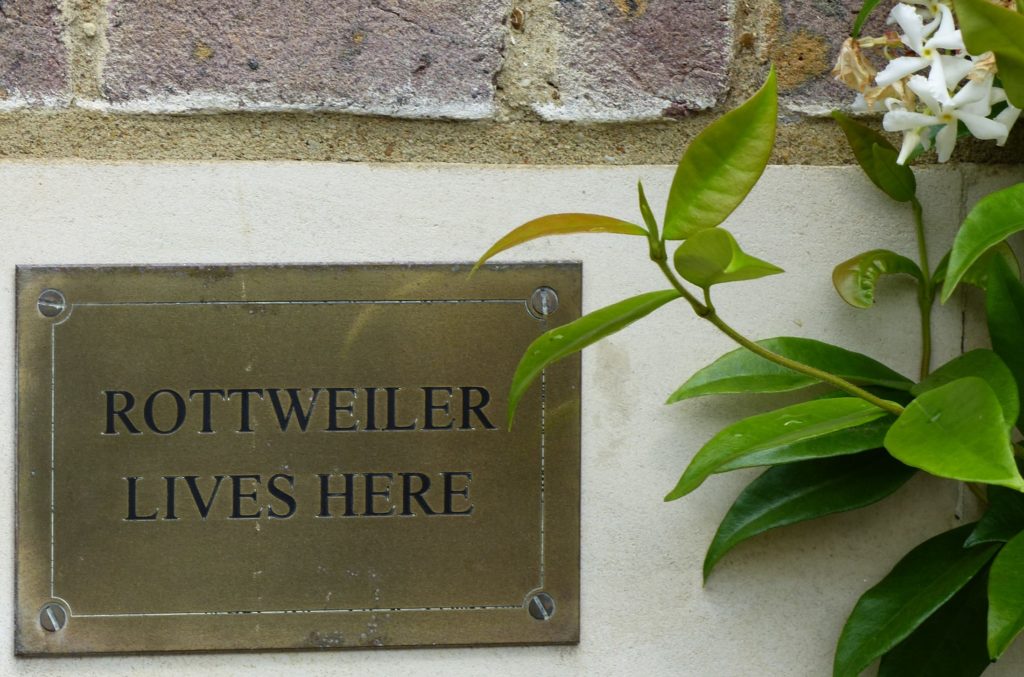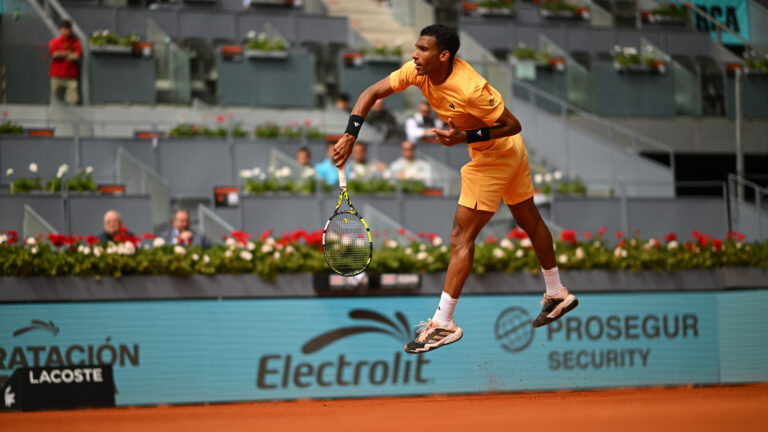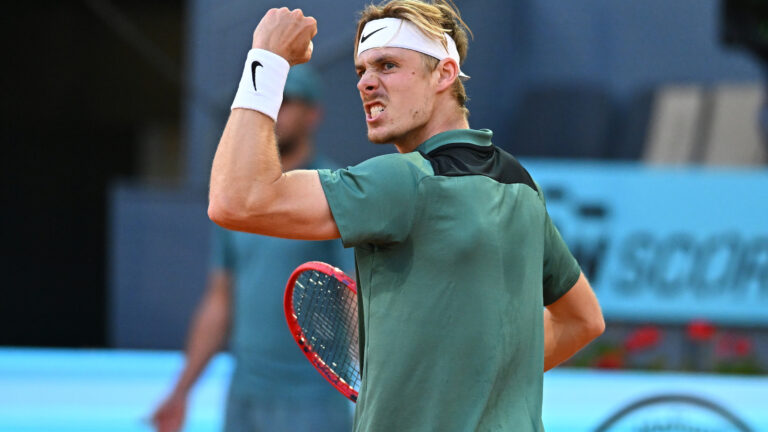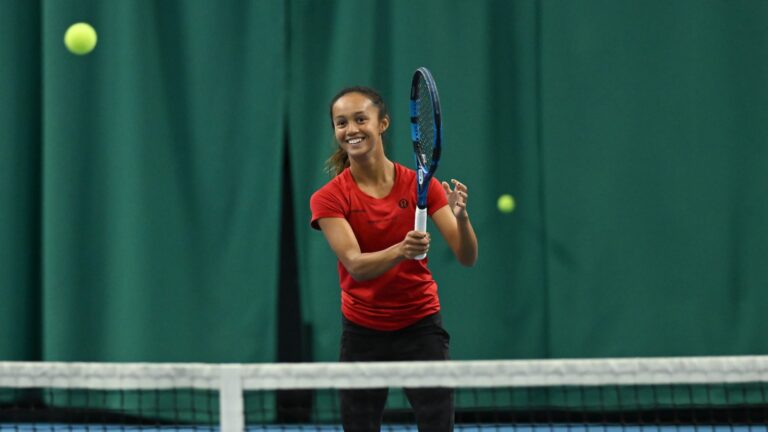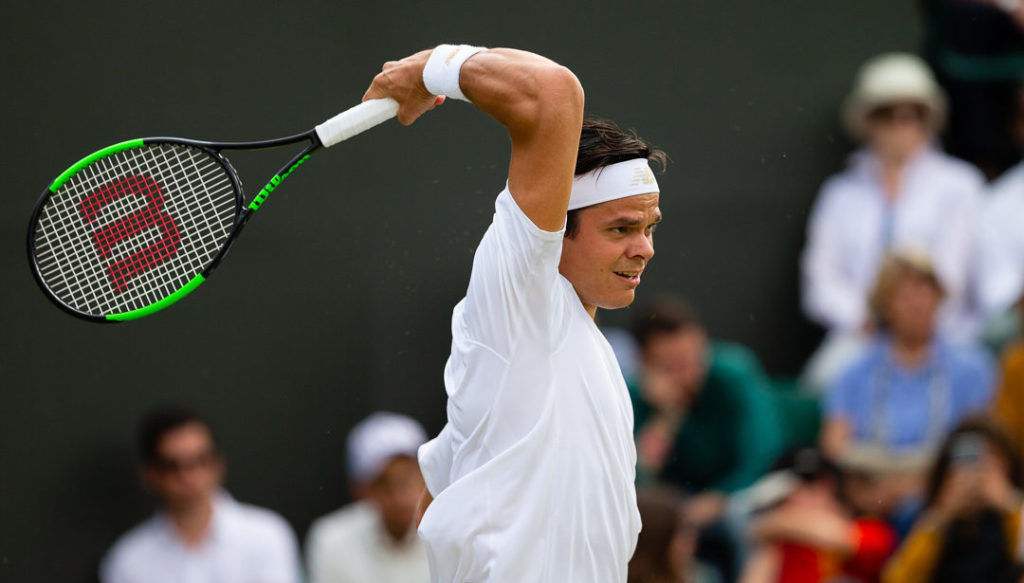
LONDON
Milos Raonic was close to perfection in the first two sets of his round-of-16 match against Guido Pella at Wimbledon on Monday. In fact in the first set he was 19-0 service points won– numbers 17, 18 and 19 being aces. Then the streak came to an end when, on set point, he was a little too bold on a second serve (131 mph) and double-faulted long.
That set, with a break of the Pella serve in the fourth game, lasted 24 minutes and finished 6-3. The second set went on longer (49 minutes) but it was still Raonic in charge as Pella could only manage six points won in his Canadian opponent’s five service games.
From the back of the court Raonic was the superior player with greater weight of shot as well as being masterful at the net – winning 8/11 (73%) in the first set and 15/20 (75 %) in the second. Final score – 6-4.
But cloudy skies darkened as the third set progressed and Raonic became more vulnerable – losing his serve trailing 2-1 with the last two points being a double fault and net rush by Pella that forced a backhand passing shot error.
Pella used the service break to run out the set 6-3. Raonic rebounded quickly in the fourth set – holding serve three times to love and then, after serving out of a love-40 deficit at 3-all and saving another break point as well, he broke Pella on four straight points to go ahead 5-3. Logically, with him serving for the match, that’s where things should have ended. But Pella broke right back after taking a love-40 lead and forcing a drop shot return error by Raonic on the third and final break point chance.
The 29-year-old Argentine held serve to 5-all and matters proceeded to a tiebreak. There was a bad omen on the very first point when Pella belted a low service return that Raonic volleyed into the net. Pella held his next two service points and that was basically all the separation he needed – grabbing a 5-1 lead and finishing it off 7-3.
In the fifth set as the light remarkably began to brighten at about 7:15 p.m., Raonic had two break points in the opening game but Pella saved them both – with a forehand passing shot winner and then a missed Raonic service return.
That, in hindsight, was Raonic’s last real opportunity. Trailing 5-4, he saved a match point with a deft forehand angled volley winner – and then two more down 6-5 before Pella finally wrapped up the three-hour and 42-minute thriller leading 7-6 – an awkward short service return on the fourth match point caught Raonic in the forecourt and he misfired with a backhand into the net.
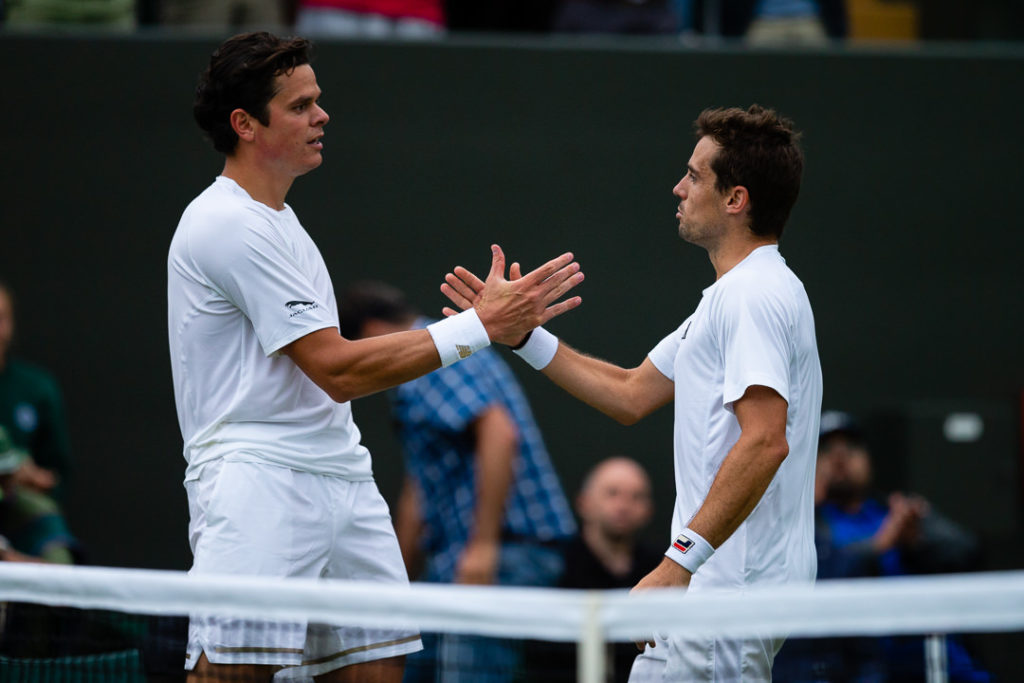
The final score was 3-6, 4-6, 6-3, 7-6(3), 8-6 for the No. 26-ranked Pella. Afterward Raonic confirmed what many had believed as his sublime form gradually dipped from the first two terrific sets to much more laboured in set three and even more so in sets four and five.
His back issues leading into Wimbledon had to have reduced his practice and fitness time and that was coming on the back of him taking off the whole clay-court season – effectively he didn’t play a match from March 24 (a loss to Kyle Edmund at the Miami Open) until June 11 in Stuttgart on grass (a win over Aussie Alexei Popyrin).
He did manage six matches on grass – three in Stuttgart before the back forced him to give a walkover to Félix Auger-Alassime in the semi-finals and then three at Queen’s Club where he lost in the quarter-finals to red-hot Feliciano Lopez, the eventual champion.
The fact that he required a cortisone shot before playing Queen’s Club was an indication of the concern about the back problem.
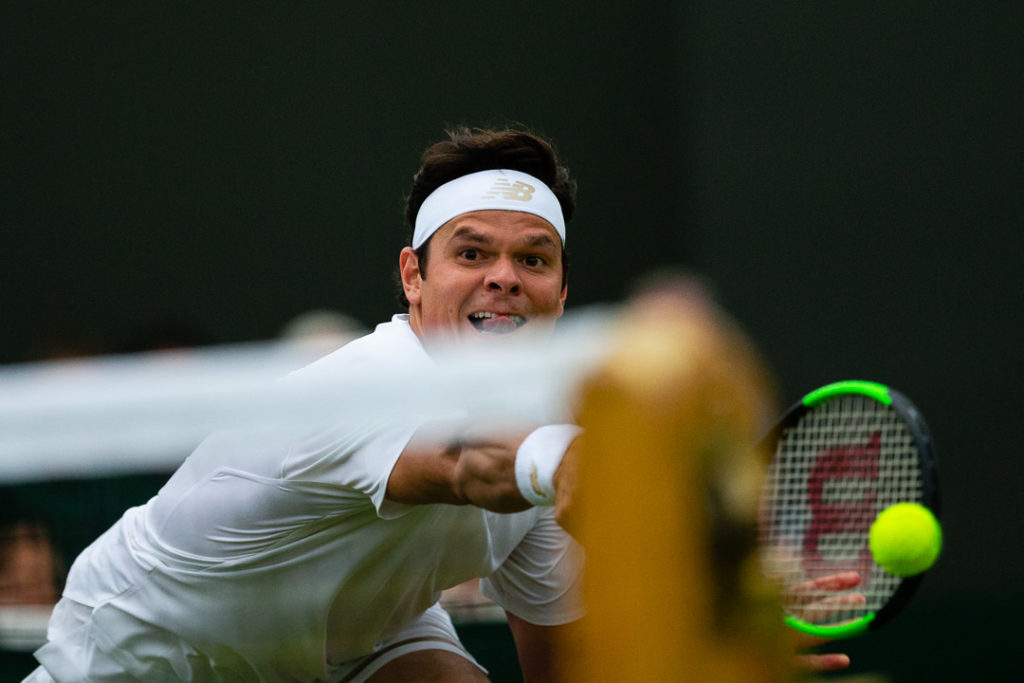
All looked rosy on Monday on Court 3 until Pella revived in the third set and the evidence began to accumulate that Raonic had lost his edge. The confidence and energy from the first two sets had diminished, and was diminishing.
“(I) just started to run out of gas,” he said about his resources as the match progressed. “I wasn’t efficient and wasn’t able to play the way I needed to. Obviously he was the one that was physically much better towards the end.”
The service stats, particularly the second-serve points won, show the drop-off in the Raonic game as the match progressed. He won 80 per cent second-serve points in the first set and 64 per cent in the second before the numbers fell to 38 per cent, 43 per cent and 50 per cent in sets three, four and five.
“I just wasn’t serving,” he said. “The numbers I was serving were significantly slower as the match went on. I just didn’t have that push in my legs to serve with the same sort of conviction and to keep him guessing. I became a bit predictable. I wasn’t pushing up with my legs. I started going to a few serves that maybe take a little bit more slice and not going for the flat or aggressive ones that I would normally need to use much more.”
About whether the back was an issue, he said, “It was, but I think it wasn’t the same issue as I had the other weeks. I think it was more once the legs got tired I started trying to move with other things.”
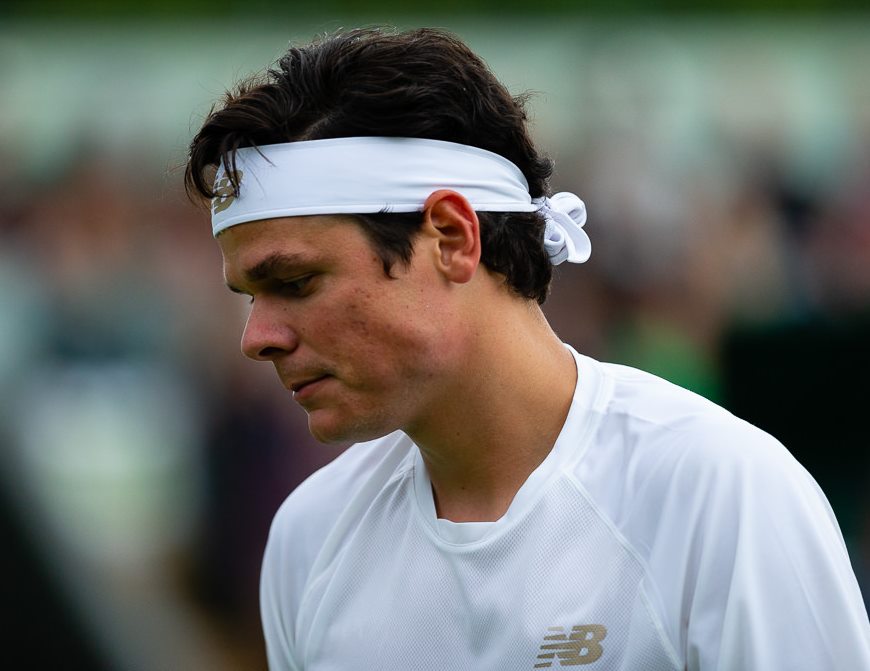
Wimbledon is the main focus of Raonic’s year, so his disappointment was obvious in his post-match media conference where he was in a sombre mood. “I thought there was a chance til the end,” he said. “But obviously I felt significantly that the momentum was starting to slip away. The three last games he had match points and converted on the last one.”
This is now the second Grand Slam in a row – after a 7-6(4), 6-3, 6-7(2), 6-4 quarter-final loss to Lucas Pouille at the Australian Open in January – when he has appeared in brilliant form before faltering. “It’s frustrating,” he said. “It’s twice this year. I ran out of gas in Australia and ran out of gas here. That happened to me a few times early in my career. I thought it was unacceptable and I think of it the exact same way now.”
As far as his preparation for this year’s Wimbledon, he said, “I think I had enough weeks at home to train, to do fitness. I just have to review what I did well and more importantly what I didn’t.
“I think it’s about how I use the time away – at which moments I come back. I feel like I have been making a few blunders on those decisions and how I spend my time when I have been training. I think that all needs to be put into consideration.”

Pella deserves some credit for weathering the Raonic early-match barrage – overall Raonic had 33 aces to just six for Pella – and then playing consistently and resourcefully once Raonic’s level began to slip.
“I knew that he had problems in the past,” Pella said about whether he was aware that Raonic was struggling as the match went on. “But I didn’t know if he has problems now. But my game is like this. I have to play long and long matches. That’s the way that it is. I always try to fight every ball. When I was two sets down, that was a very tough moment for me because he was playing really, really good.”
Pella, who has now gone two rounds further than last year when he reached the third round at Wimbledon, got a few chuckles in the post-match interview when he was asked about failing to convert his first three match point chances. “It was so bad,” he said smiling. “I think when I lost the third match point I wanted to cry. He was serving so good those points that I couldn’t do anything.”
There was a moving moment in Pella’s media conference in Spanish with Argentine reporters when he said, “This is the first time I really feel important.”
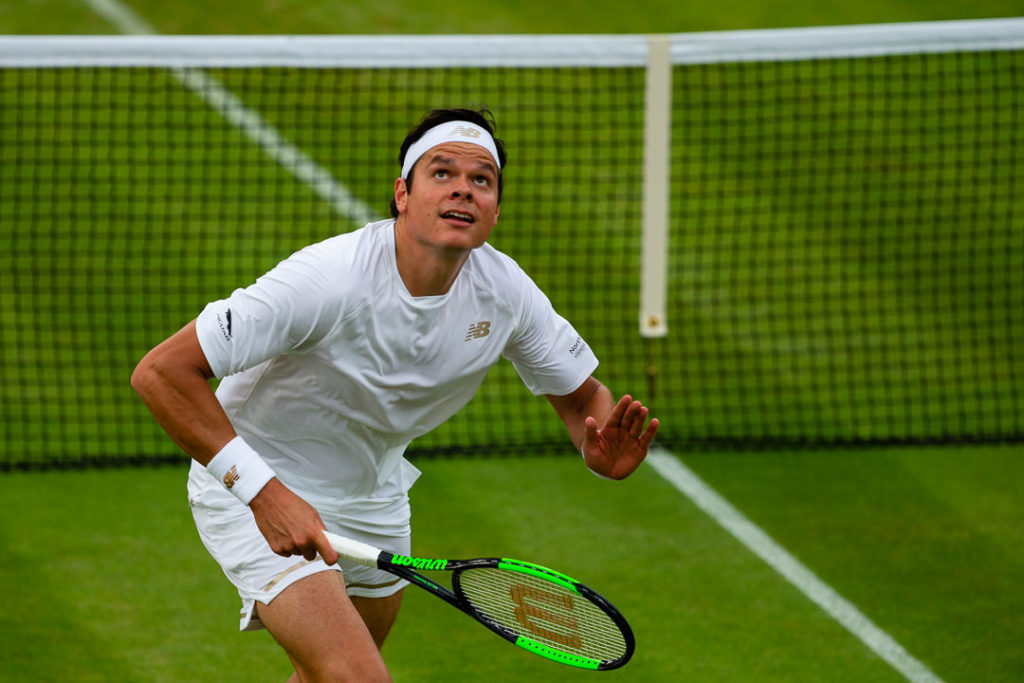
Now Raonic will try to bounce back for the hard court season in North America – he said his first tournament would likely be the ATP 500 event in Washington, D.C., starting July 27th – to be followed by Coupe Rogers in Montreal and the Masters 1000 in Cincinnati.
It appears his ATP ranking will drop from No. 17 to about No. 21, which will probably put him two spots ahead of Auger-Aliassime’s No. 23.

DRAXL INTO SECOND ROUND
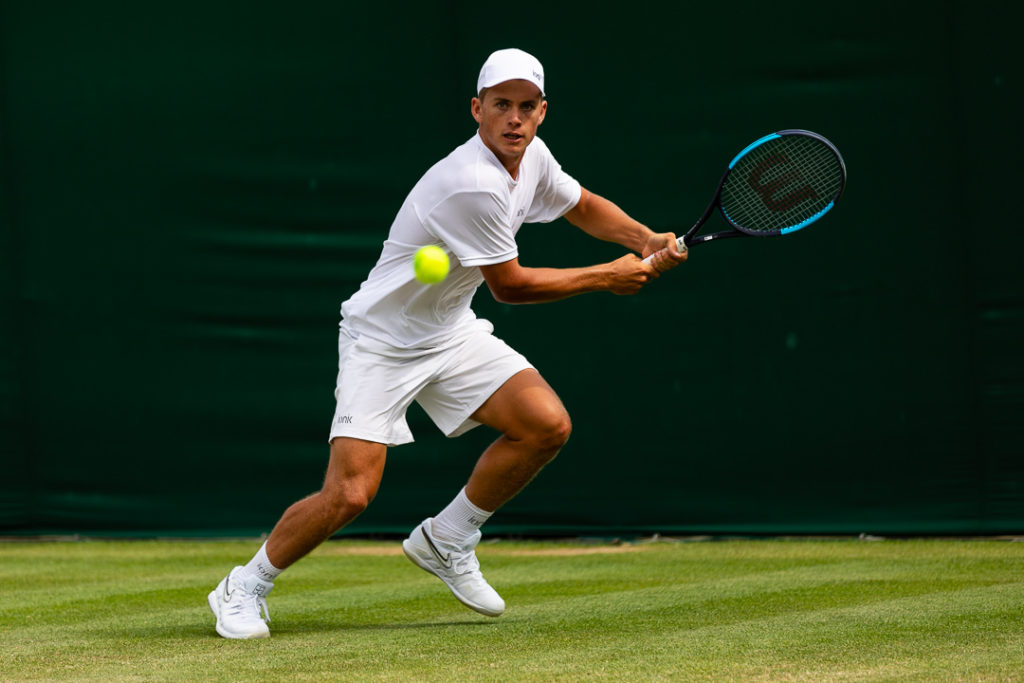
Liam Draxl of Newmarket, Ont., advanced to the second round of the junior boys singles event with a 6-3, 6-3 victory over Jack Pinnington Jones of Britain on Monday.
The 12th-seeded Draxl took the first set and then broke to 3-2 in the second in a game when he hit a screaming on-the-run forehand winner. “I’ve been practising that shot,” the 17-year-old said later, “especially for the grass courts”. Pinnington Jones, 16, was a bit erratic but was able to have streaks of winning shots. “He’s a dangerous player,” Draxl said about the 16-year-old Brit. “He hits the ball flat, which is good on grass.”
Playing his first tournaments on grass, Draxl feels at home. “I really like playing on the grass,” he said. “I hadn’t played on it before but I think it suits my all-round game.”
In the second round he will play unseeded Dalibor Svrcina, 16, of the Czech Republic.
DABROWSKI INTO QUARTERS
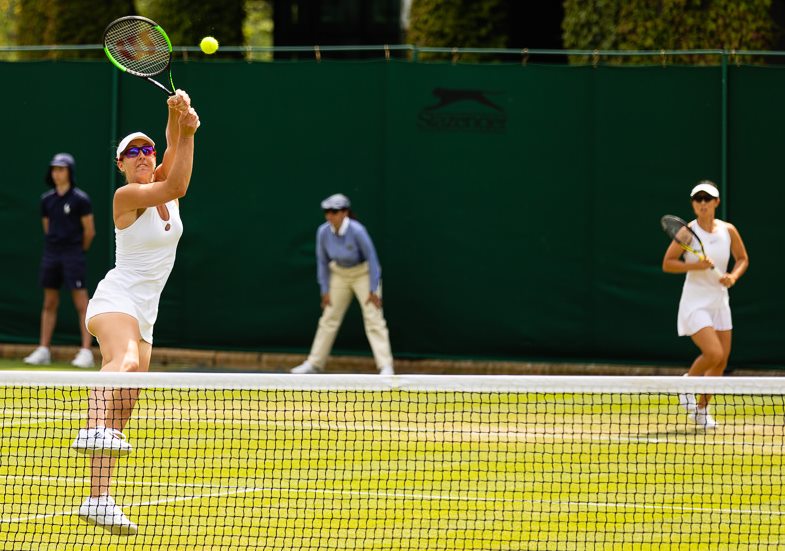
Gabriela Dabrowski and her Chinese partner Xu Yifan reached the quarter-finals of the Wimbledon doubles on Monday, defeating the Chinese duo of Duan Yingying and Zheng Saisai 7-5, 6-3.
The fourth seeds will next play Americans Danielle Collins and Bethanie Mattek-Sands after they got a walkover from 10th seeds Ashleigh Barty and Victoria Azarenka.
Her second-round mixed doubles match, with partner Mate Pavic of Croatia, against Mattek-Sands of the U.S, and Jamie Murray of Britain, was suspended due to darkness with the third-seeded Dabrowski and Pavic leading 4-3 in the third set.
TIP OF THE CAP TO FELIX
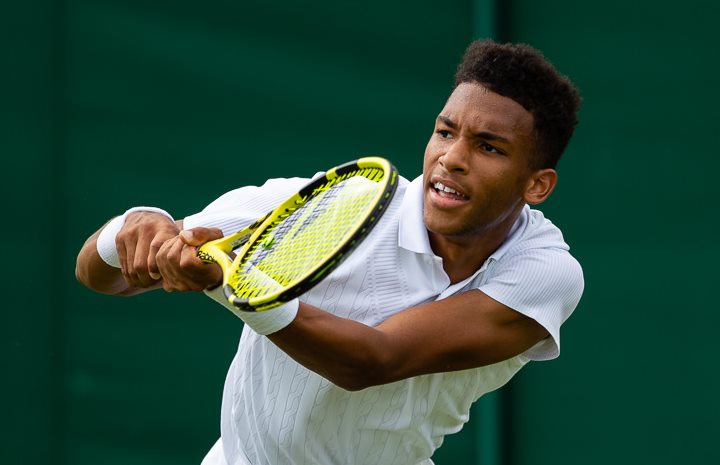
Félix Auger-Aliassime was pretty hard on himself after his 6-4, 7-5, 6-3 loss to Ugo Humbert of France in Friday’s third round.
“Pressure got to me… It got to a point where it was a bit embarrassing,” he said. “It was just tough. I think he just did what he had to do. It was solid. From my end it was pretty embarrassing.”
To put things in perspective – a year ago at this time Auger-Aliassime was 17 and ranked No. 152. Now he’s 18 and ranked No. 21. A year ago some observers, including this blogger, believed he made a mistake by playing clay-court Challenger events in France and Germany and missing a chance to get valuable experience on grass.
Well those people were wrong because he earned important ranking points on clay last year and then didn’t miss a beat this year when he transitioned onto the grass for tournaments in Stuttgart (final), at Queen’s Club (semi-final) and at Wimbledon (third round).
While there was some disappointment at his loss to the No. 66-ranked Humbert at Wimbledon – here’s a look at the bottom line. A year ago in the five weeks after the French Open he got 167 ATP ranking points playing those Challengers. This year, over the same period, he earned 420 ATP ranking points. That sure seems like progress.
WIMBLEDON POST CARD
If you look closely at the brick column to the left of the entrance to this stately residence on Parkside Avenue across from Wimbledon Common, you will see a small metal plaque. Below is what’s written on it:
(Feature photo: Mauricio Paiz)
